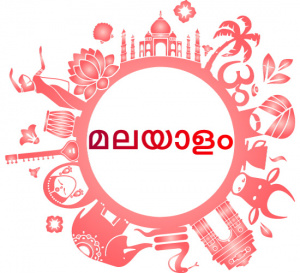Difference between revisions of "Language/Malayalam/Culture/Arts-and-Performances"
m (Quick edit) |
m (Quick edit) |
||
| Line 8: | Line 8: | ||
Hello and welcome back to the "Complete 0 to A1 Malayalam Course". In this lesson, we will be exploring the rich tradition of art forms and performances unique to Kerala. Kerala is known for its diverse and unique art forms, which are a reflection of its rich cultural heritage. These art forms have a history of several centuries and continue to thrive today. I hope you will find this lesson informative and interesting. | Hello and welcome back to the "Complete 0 to A1 Malayalam Course". In this lesson, we will be exploring the rich tradition of art forms and performances unique to Kerala. Kerala is known for its diverse and unique art forms, which are a reflection of its rich cultural heritage. These art forms have a history of several centuries and continue to thrive today. I hope you will find this lesson informative and interesting. | ||
<span link>Finish this lesson and explore these related pages: [[Language/Malayalam/Culture/Festivals-of-Kerala|Festivals of Kerala]] & [[Language/Malayalam/Culture/The-Land-of-Kerala|The Land of Kerala]].</span> | |||
== Classical Art Forms == | == Classical Art Forms == | ||
| Line 46: | Line 48: | ||
Thank you for reading, and I will see you in the next lesson! | Thank you for reading, and I will see you in the next lesson! | ||
<span link>With this lesson finished, you may want to explore these additional pages: [[Language/Malayalam/Culture/Golden-Era-of-Malayalam-Cinema|Golden Era of Malayalam Cinema]] & [[Language/Malayalam/Culture/Malayalam-Music|Malayalam Music]].</span> | |||
{{#seo: | {{#seo: | ||
|title=Malayalam Culture: Kerala Culture and Traditions- Arts and Performances | |title=Malayalam Culture: Kerala Culture and Traditions- Arts and Performances | ||
| Line 59: | Line 63: | ||
[[Category:Malayalam-0-to-A1-Course]] | [[Category:Malayalam-0-to-A1-Course]] | ||
==Other Lessons== | |||
== | |||
* [[Language/Malayalam/Culture/Golden-Era-of-Malayalam-Cinema|Golden Era of Malayalam Cinema]] | * [[Language/Malayalam/Culture/Golden-Era-of-Malayalam-Cinema|Golden Era of Malayalam Cinema]] | ||
* [[Language/Malayalam/Culture/Cuisine-and-Food-Traditions|Cuisine and Food Traditions]] | * [[Language/Malayalam/Culture/Cuisine-and-Food-Traditions|Cuisine and Food Traditions]] | ||
| Line 69: | Line 72: | ||
{{Malayalam-Page-Bottom}} | {{Malayalam-Page-Bottom}} | ||
<span links></span> | |||
Revision as of 23:04, 27 March 2023
Hello and welcome back to the "Complete 0 to A1 Malayalam Course". In this lesson, we will be exploring the rich tradition of art forms and performances unique to Kerala. Kerala is known for its diverse and unique art forms, which are a reflection of its rich cultural heritage. These art forms have a history of several centuries and continue to thrive today. I hope you will find this lesson informative and interesting.
Finish this lesson and explore these related pages: Festivals of Kerala & The Land of Kerala.
Classical Art Forms
Kerala has a rich tradition of classical art forms that date back to ancient times. These art forms are steeped in history and have been passed down from generation to generation. Here are some of the most famous classical art forms:
Kathakali
Kathakali is one of the most famous classical art forms of Kerala. It is a form of dance-drama that combines music, dance, acting, and hand gestures. The performances are characterized by vivid costumes, elaborate makeup, and dramatic movements. The themes of the performances are usually based on mythology and epics.
Mohiniyattam
Mohiniyattam is a classical dance form that originated in Kerala. It is known for its graceful movements, gentle facial expressions, and beautiful costumes. The themes of the performances are usually based on Hindu mythology, and the dances usually tell stories of love and devotion.
Koodiyattam
Koodiyattam is a Sanskrit theatre form that has been performed in Kerala for over a millennium. It is characterized by a unique style of acting, elaborate makeup, and costumes. The themes of the performances are usually based on Hindu mythology, and the actors usually play multiple characters.
Folk Art Forms
Kerala is also known for its vibrant and diverse folk art forms. These art forms are usually performed during festivals and other special occasions. Here are some of the most famous folk art forms:
Theyyam
Theyyam is a popular folk art form that is practiced in the northern part of Kerala. It is a form of worship that is performed in front of the village temple. The performers wear colorful costumes and makeup, and the themes of the performances are usually based on Hindu mythology.
Thiruvathira Kali
Thiruvathira Kali is a women's dance form that is usually performed during the Thiruvathira festival. The dance is characterized by slow, graceful movements, and the performers usually wear traditional Kerala sarees. The themes of the performances are usually based on love and devotion.
Oppana
Oppana is a traditional Muslim dance form that is performed during weddings and other special occasions. It is characterized by graceful movements and beautiful singing. The themes of the performances are usually based on love and romance.
Conclusion
In conclusion, Kerala is a treasure trove of art forms and performances that reflect the state's rich cultural heritage. From classical to folk, there is something for everyone when it comes to Kerala's art forms. I hope this lesson has given you a glimpse into Kerala's unique art culture.
Thank you for reading, and I will see you in the next lesson!
With this lesson finished, you may want to explore these additional pages: Golden Era of Malayalam Cinema & Malayalam Music.
Other Lessons
- Golden Era of Malayalam Cinema
- Cuisine and Food Traditions
- Festivals of Kerala
- The Land of Kerala
- Malayalam Music
- Famous Malayalam Writers and Works
